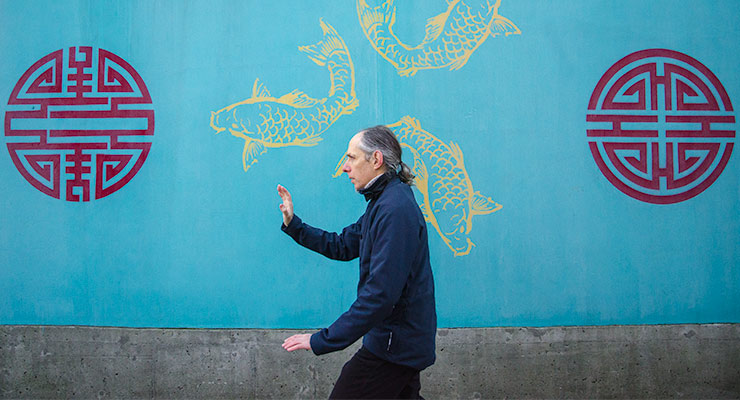
Yang Style Tai Chi
Overview
Yang Cheng Fu's Tai Chi in its many variations is the most popular style of Tai Chi in the world today. While somewhat more physically demanding than the Tai Chi for Arthritis Form, learning this form allows one to delve deeper into the martial as well as health aspects of Tai Chi.
This Yang style Long form consists of 44 movements totaling 108 movements when you include repetitions. It is divided into three sections and takes 25 to 30 minutes to do from beginning to end.
Martial vs Health Aspects
Tai Chi Chuan was originally conceived primarily as a martial art that happened to have strong health benefits. Although we at Moving Health Tai Chi do not train to defend ourselves with Tai Chi, the health aspects of the form are most effectively realized by having an understanding of the martial aspects of the postures. In other words doing the postures using principles that are also engendering martial power produces the maximum health benefits. These principles include but are not limited to: Sinking the weight and lowering one’s center of gravity, releasing tension as you move, moving from one’s center or core, coordinating the upper and lower body, and limbs never fully extended.
Just How Does Tai Chi Benefit Health?
We are born soft and supple
Dead, we are stiff and hard.
Plants are born tender and pliant,
Dead ,they are brittle and dry.
Thus whoever is stiff and inflexible
Is a disciple of death,
Whoever is soft and yielding.
Is a disciple of life.
From “Tao Te Ching” Chapter 76- Translated by Carl Sanburg
The slow, circular, and fluid arm movements and pumping leg movements of Tai Chi improve blood circulation providing increased nourishment for the muscles, tendons, ligaments and fascia (connective tissue) and thereby ease pain and stiffness. Tai Chi’s form of relaxed movement lowers blood pressure by the releasing of restrictions in fascia wherein the veins and arteries are contained. As well this type of movement stimulates the circulation of lymph resulting in greater immunity and less inflammation in the tissues.
Tai Chi trains good postural habits through doing the form in accordance with certain body alignment principles. For example imagining that a point at top of the head has a string attached encourages the proper alignment of the head and neck allowing neck muscles to release and the shoulders to drop.
Weight bearing on one leg strengthens the lower body. Balance is improved by learning to lower one’s center of gravity and move in a relaxed manner. Moving from one’s core or “center” strengthens the spinal stabilizing muscles which helps prevent and helps relieve back ache.
Tai Chi’s flowing movements naturally deepens one’s breathing which has several positive effects including relaxation, oxygenation of the blood, and the massaging of internal organs, particularly the digestive system.
Doing the movements mindfully helps reduce stress and “unclutter” the mind. Tai Chi has been shown to help improve sleep.
There is research that suggest’s Tai Chi has positive effects on the following conditions: anxiety, high blood pressure, high cholesterol, migraine, ulcers, constipation, depression, asthma, fibromyalgia, osteoporosis, arthritis and many conditions associated with aging.
Beyond Tai Chi’s specific health effects, the enjoyment of this physically and mentally stimulating activity increases one’s overall sense of well being. In other words Tai Chi is fun!
